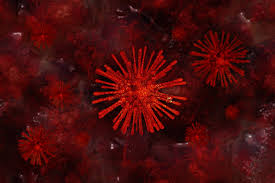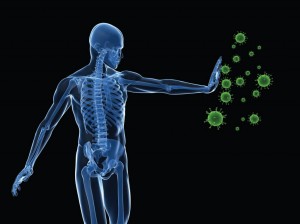Highlights
•
Proteo-metabolomics predicts SDS dependency that is validated in patient tumor slices
•
OAT, GLS, and ALDH18A1 form an axis central to mitochondrial rewiring in FLC
•
Profiling and functional studies show a lack of dependency on glycolysis
•
Erastin administration in tumor tissue slices demonstrates potential dependency on VDAC
Summary
Fibrolamellar carcinoma (FLC) is a rare, lethal, early-onset liver cancer with a critical need for new therapeutics. The primary driver in FLC is the fusion oncoprotein, DNAJ-PKAc, which remains challenging to target therapeutically. It is critical, therefore, to expand understanding of the FLC molecular landscape to identify druggable pathways/targets. Here, we perform the most comprehensive integrative proteo-metabolomic analysis of FLC. We also conduct nutrient manipulation, respirometry analyses, as well as key loss-of-function assays in FLC tumor tissue slices from patients. We propose a model of cellular energetics in FLC pointing to proline anabolism being mediated by ornithine aminotransferase hyperactivity and ornithine transcarbamylase hypoactivity with serine and glutamine catabolism fueling the process. We highlight FLC’s potential dependency on voltage-dependent anion channel (VDAC), a mitochondrial gatekeeper for anions including pyruvate. The metabolic rewiring in FLC that we propose in our model, with an emphasis on mitochondria, can be exploited for therapeutic vulnerabilities.
Introduction
Fibrolamellar carcinoma (FLC) is a devastating, early-onset, rare cancer of the liver with no standard of care.1,2,3 Surgery is the only intervention with curative intent, but many patients experience recurrence or are not eligible given the advanced stage of disease by the time of diagnosis. For patients whose tumors are unresectable, there is no standard systemic therapy, and the average survival period is 12 months.4 There is a dire need for deeper understanding of the disease toward new therapeutic options.
The most recurrent genetic lesion in FLC is a somatic, heterozygous ∼400 kb deletion on chromosome 19, which leads to an in-frame fusion of exon 1 of DNAJB1 with exons 2–12 of PRKACA.5,6 The translation of the resulting transcript leads to the chimeric protein, DNAJ-PKAc (DP). At least two studies have demonstrated that DP is sufficient to initiate tumors in mice,7,8 and even more recent work has shown that it may play a role in tumor maintenance as well.9 Although there is widespread interest in targeting DP, clinical inhibitors are not yet available. It also remains a challenge to inhibit DP without also affecting wild-type protein kinase A (PKA), which is critical for normal physiology.10,11 Therefore, it is important to investigate downstream mediators of FLC pathogenesis, as it will deepen mechanistic understanding of FLC and potentially unveil additional therapeutic targets.
Some mechanisms by which DP transforms cells and re-wires their behavior have been elucidated through a growing number of cell signaling and molecular profiling experiments.1 Genome-scale studies have brought to light potential therapeutic vulnerabilities. For example, one of our earlier studies defined FLC-specific super enhancers, which may be critical for understanding cellular rewiring.12 Other studies have identified highly dysregulated microRNAs, including those that have emerged as compelling targets in pre-clinical studies of other aggressive cancers.1 Despite these important advances, all of the “omics” landscaping has been largely focused on chromatin/transcription and gene/microRNA expression.
Only one prior study13 aimed to characterize the proteome and metabolome of FLC (proteomics—n = 16 patient samples; n = 4,620 proteins; metabolomics—n = 10 patient samples). Here, we have carried out the most extensive integrative proteo-metabolomic analysis of FLC (proteomics—n = 23 patient samples; n = 8,485 proteins; metabolomics—n = 26 patient samples; n = 135 metabolites). We included in the analysis previously generated transcriptomic data and performed a suite of complementary experiments and assessments including (1) respirometry on frozen, matched FLC tumors vs. non-malignant adjacent liver (NML) patient tissue, (2) nutrient manipulation and seahorse assays on a cell-based model of FLC, (3) manual curation of relevant clinical data pertaining to serum, plasma, and urine specimens, and (4) key loss-of-function experiments in FLC patient tumor slices to validate several critical components of our model.
Results
Data quality
A schematic of the proteo-metabolomics experimental design is shown in Figure S1. After applying quality control filters to the data (see STAR Methods), twenty-three (proteomics) and twenty-six samples (metabolomics) remained, of which seventeen were omics matched (present in both the proteomics and metabolomics data). Principal-component analysis (PCA) and hierarchal clustering were performed on samples with proteomic and metabolomic data (Data S1and S2). The sufficiency of our sample size was assessed by constructing an extreme gradient boost machine learning (XgBoostML) pipeline with nested cross-validation (CV) (Figures S2A and S2B; see STAR Methods) that needed to fulfill at least one of two criteria: (1) the omics-based stratification of patient cohort samples (nproteomics = 23 samples and nmetabolomics = 26 samples; used throughout this study) is comparable to that of physician diagnoses and/or (2) the omics-derived model is generalizable to a new, independent cohort of patient samples. The pipeline fulfilled both criteria for proteomics and one of the criteria for metabolomics (Figures S2C–S2F; see STAR Methods for more detail).
Amino acid transport may be favored in FLC and diverted into protein synthesis
We first assessed proteins and metabolites that comprise plasma membrane (PM) transport and metabolism of key nutrients. For glucose exchange, we focused on the SLC2A (solute carrier 2A) family given that this class of transporters specializes in the transport of monosaccharides.14,15,16,17 Seven out of the thirteen members were identified across both our proteomics and previously published transcriptomics datasets. Most notably, SLC2A2, the major glucose transporter of the liver,18,19,20 was significantly downregulated at both the protein (<1st percentile) and transcript (5th percentile) level in FLC compared to NML (FvsN), with no concomitant upregulation of any other SLC2A member (Figures 1A and S3A). Moreover, glucose was significantly depleted in FvsN (Figures 1A, S3B, and S3C)….







